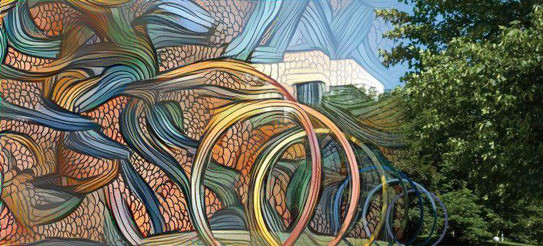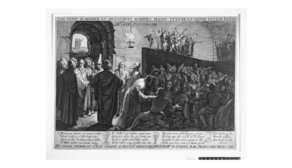Method Development
Machine learning and automatic recognition of inherent patterns play an important role in experimental astroparticle physics, as in many other areas of daily life.

Only with the help of suitable learning algorithms can the large amounts of data (Big Data) be efficiently analyzed for cosmic messenger particles such as high-energy photons or neutrinos and these selected in a suitable manner from the overwhelming background of atmospheric muons.
To this end, the learning algorithms must not only be properly trained, but their performance must also be suitably validated. The work on automated selection of astrophysical messenger particles is carried out, among others, in the framework of subproject C3 of the Collaborative Research Center SFB 876. The areas of work in the field of machine learning include, among others, the following subprojects:
- Estimation of primary particle properties using machine learning, especially ensemble methods and deep learning.
- Spectral reconstruction using learning algorithms
- Efficiency improvement of air shower simulations by machine learning
The Collaborative Research Center SFB 876 has now been terminated. One of the SFB's most prominent results is the book trilogy "Machine Learning under Resource Constraints" (Book 1: Foundations, Book 2: Physical Discovery, Book 3: Applications).

The recently terminated SFB was the starting point for the founding of the Lamarr Institute. The Lamarr Institute is Dortmund's competence center for the development of innovative applications in the fields of artificial intelligence and machine learning. It brings together researchers from various scientific disciplines, such as physics and computer science.
The "Network of German Competence Centers for Artificial Intelligence" is presented at ki-zentren.net. In addition to the Lamarr Institute, this network includes the Tübingen AI Center in Tübingen and the German Research Center for Artificial Intelligence.
You can also learn more about end-to-end analysis with machine learning in this article.
Deconvolution projects developed at E5b
Project-specific deconvolution algorithms have been developed at E5b, some of which are publicly available.
DSEA
The Dortmund Spectrum Estimation Algorithm is a method for the reconstruction of spectra in which the deconvolution is conceived as a multinomial classification problem.
Funfolding
Funfolding has been developed specifically for deconvolution of IceCube data. Funfolding is a Python library in which several algorithms are implemented, among others the Blob/Run Likelihood Unfolding Algorithm. Main features are "likelihood-based unfolding techniques and decision tree-based binning". You can find this project at GitHub.
TRUEE
TRUEE (Time-dependent Regularized Unfolding for Economics and Engineering problems) is a new software package for numerical solution of inverse problems (unfolding). The algorithm is based on the application RUN (Regularized UNfolding) written in FORTRAN 77. The deconvolution algorithm was used in the analysis in experiments of particle and astroparticle physics and was characterized by particularly stable results and reliable uncertainties. Nowadays, besides FORTRAN, the C++ programming language is widely used in analysis programs in various research areas. Therefore, the C++ deconvolution program TRUEE was developed, which contains the RUN algorithm and additional extensions, which allow a comfortable and user-friendly application. The results of TRUEE and RUN are identical.

![[Translate to English:] [Translate to English:]](/storages/app-physik/_processed_/3/a/csm_APPGroupphoto2023_001_small_858e4405eb.jpg)


